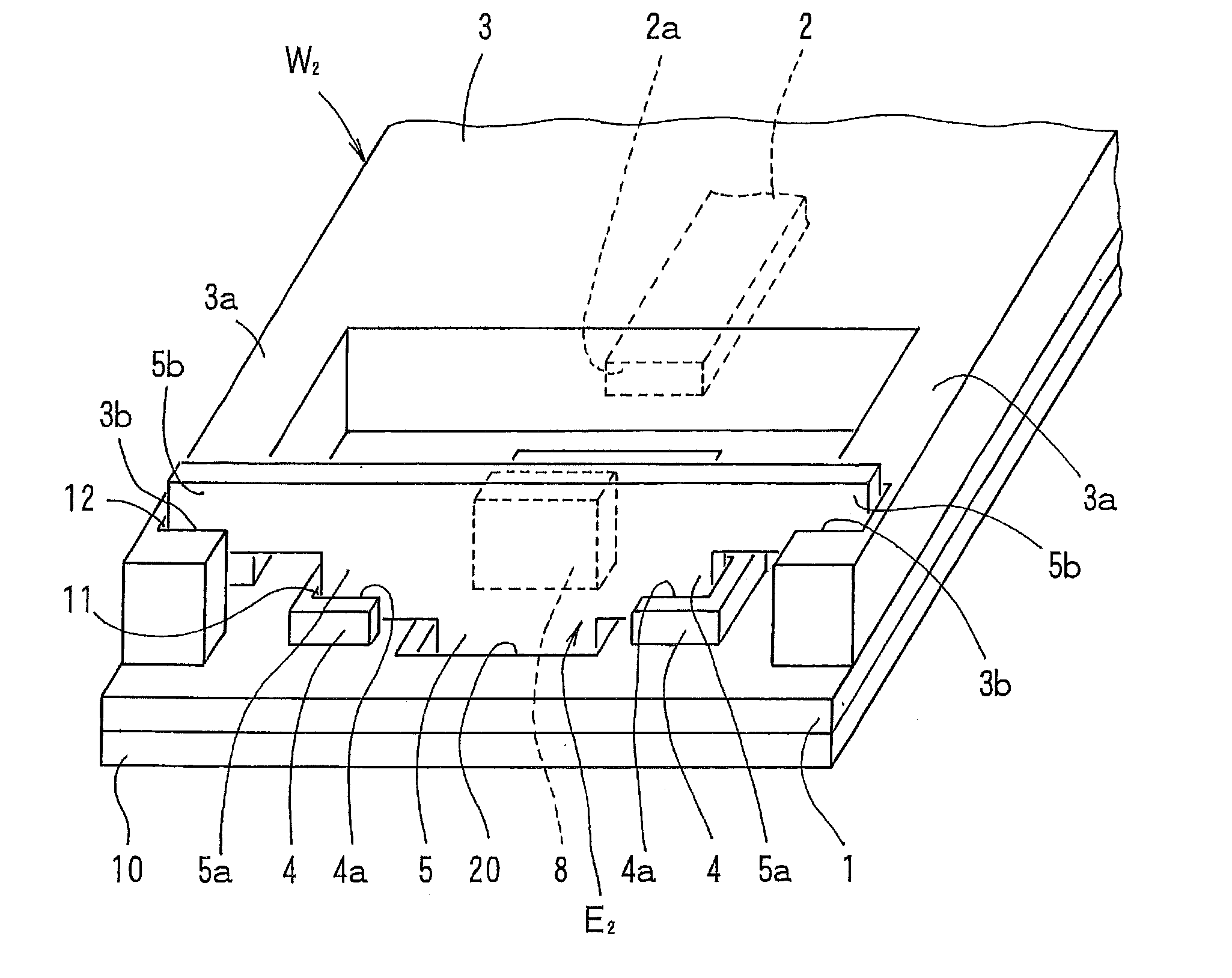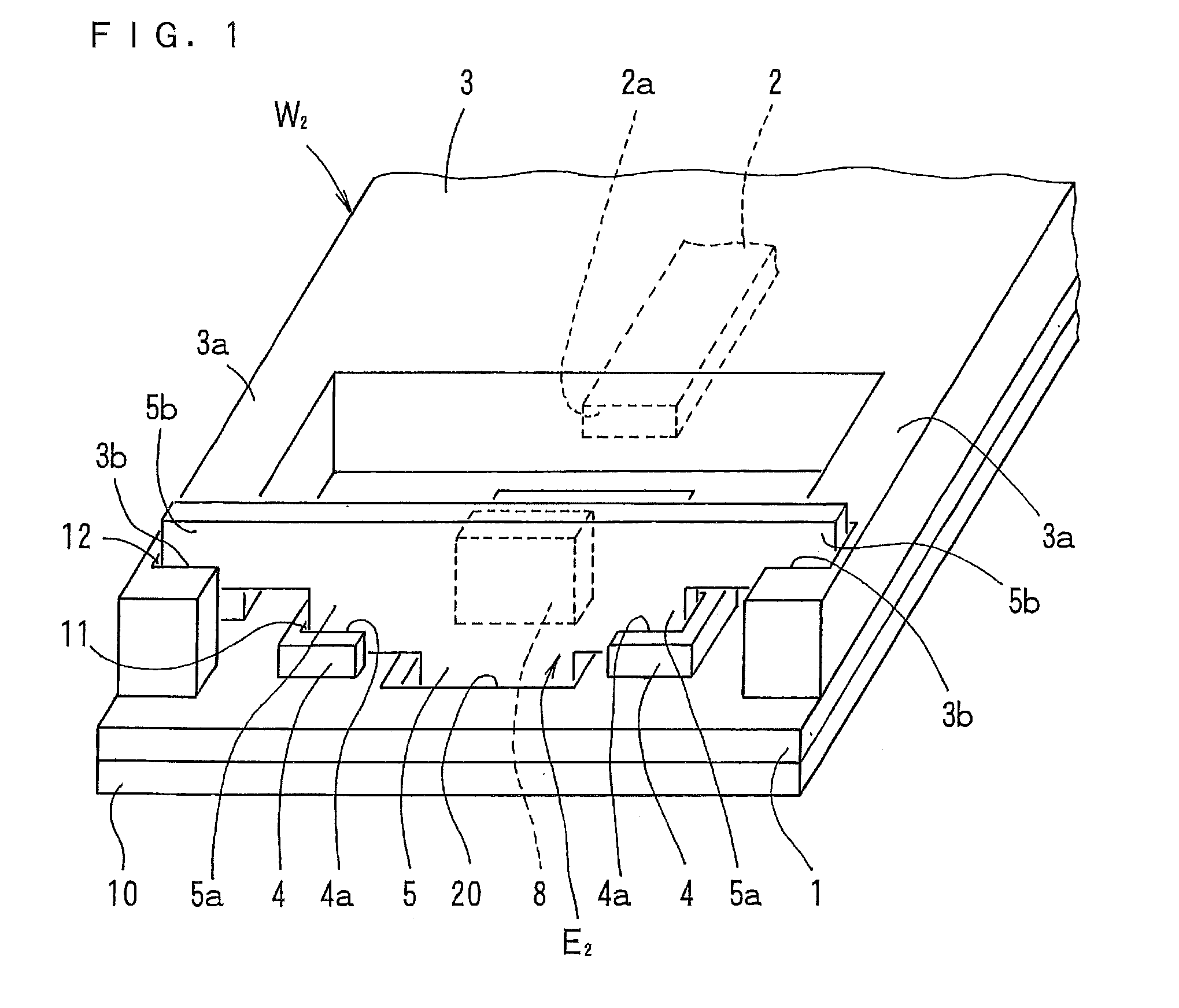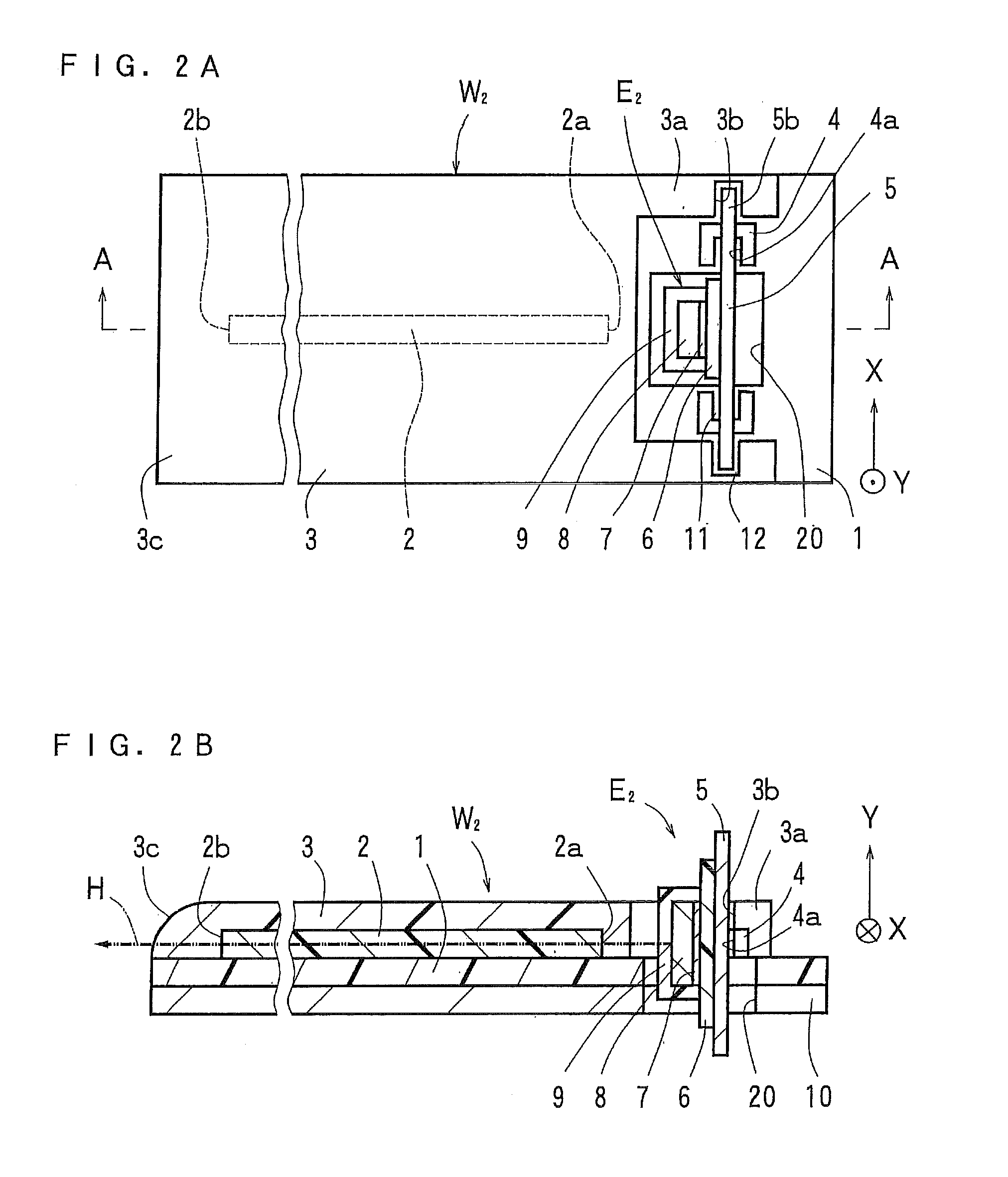Method of manufacturing optical sensor module and optical sensor module obtained thereby
a manufacturing method and sensor technology, applied in the field of manufacturing optical sensor modules and optical sensor modules obtained thereby, can solve the problems of unsuitable mass production, unsuitable for mass production, and still has room for improvement in alignment accuracy and cost, and achieves the effect of simple positioning structur
- Summary
- Abstract
- Description
- Claims
- Application Information
AI Technical Summary
Benefits of technology
Problems solved by technology
Method used
Image
Examples
##ventive example 1
Inventive Example 1
Production of Optical Waveguide Section
[0084]The material for the formation of the above-mentioned under cladding layer was applied to a surface of a sheet material made of stainless steel (having a thickness of 50 μm) with an applicator. Thereafter, exposure by the use of irradiation with ultraviolet light (having a wavelength of 365 nm) at 2000 mJ / cm2 was performed, to thereby form the under cladding layer (having a thickness of 20 μm) (with reference to FIG. 5A).
[0085]Then, the material for the formation of the above-mentioned core and the protruding portions was applied to a surface of the above-mentioned under cladding layer with an applicator. Thereafter, a drying process was performed at 100° C. for 15 minutes to form a photosensitive resin layer (with reference to FIG. 5B). Next, a synthetic quartz chrome mask (photomask) formed with an opening pattern identical in shape with the pattern of the core and the protruding portions were placed over the photosen...
##ventive example 2
Inventive Example 2
[0091]Portions of the pair of groove portions corresponding to an upper surface portion of the over cladding layer in Inventive Example 1 described above were formed as tapered portions (with reference to FIG. 8). The dimensions of the groove portions were shown in FIGS. 10A and 10B. FIGS. 10A and 10B showed the groove portion 14 having the greater depth (a depth of 5.0 mm). The groove portion 13 having the smaller depth (with reference to FIG. 8) had a depth of 3.0 mm. The remaining dimensions of the groove portion 13 were similar to those of the groove portion 14 having the greater depth. Of the pair of protruding portions 15 and 16, as shown in FIG. 10C, the protruding portion (left-hand as seen in the FIG. 15 closer to the grove portion 13 having the smaller depth was formed in a generally U-shaped plan configuration, and had a generally U-shaped opening portion in the form of the tapered portion 15a, whereas the protruding portion (right-hand as seen in the F...
PUM
 Login to View More
Login to View More Abstract
Description
Claims
Application Information
 Login to View More
Login to View More - R&D
- Intellectual Property
- Life Sciences
- Materials
- Tech Scout
- Unparalleled Data Quality
- Higher Quality Content
- 60% Fewer Hallucinations
Browse by: Latest US Patents, China's latest patents, Technical Efficacy Thesaurus, Application Domain, Technology Topic, Popular Technical Reports.
© 2025 PatSnap. All rights reserved.Legal|Privacy policy|Modern Slavery Act Transparency Statement|Sitemap|About US| Contact US: help@patsnap.com



